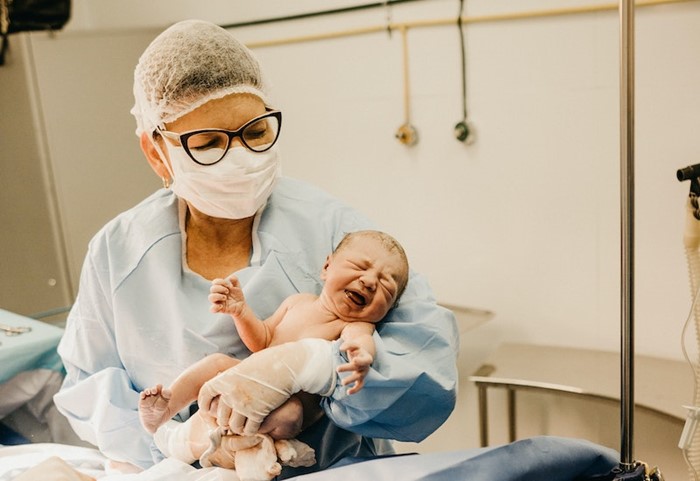The Midwife Crisis
Guest Post by Jo Chapman
Alarm bells are ringing over midwife staffing levels in the NHS and articles proliferate in the media about “the midwife exodus”, citing safety fears for mothers and babies as key drivers.[1]

Why is understaffing and substandard care so common on maternity wards and what needs to be done to better help midwives – and in turn – the women and babies they look after?
Understaffing comes in part from the increasing social and medical complexity of the pregnant population. This means that more high risk women are having babies, and maternity services are looking after women with more complex social needs. Women who book late put particular pressure on services and vulnerable women are less likely to access services early in their pregnancies. [2]
Partly as a result of fewer midwives and more technology, birth is increasingly medicalised and this can reduce the normality of birth - that is, one that occurs without medical management of any kind – in low-risk mothers. This leads to fewer funded maternity posts and a lack of funded posts means that not all newly qualified midwives can find jobs.[3]
As experienced midwives retire from the profession, newly qualified midwives lack adequate senior support and supervision, leading to stress and disenchantment. Low morale increases sickness rates, inadequate cover, overstretched staff, less-safe care and further demoralisation, leading in turn to problems with staff retention.[4]
Reforms and reconfigurations under successive governments with associated NHS organisations have also reportedly had a detrimental effect on training, and staffing levels.[5]
How does this impact on safety?
There are many and varied consequences of staff shortages but perhaps the most obvious impact is that it’s more difficult, if not impossible, for midwives to provide one-to-one care for women.
It is generally unacceptable for a midwife to have to look after more than one woman in labour at a time and this is especially important for high risk women.
The NICE Guidelines published in 2007 expressly state:
- Provide a woman in established labour with supportive one‑to‑one care.
- Do not leave a woman in established labour on her own except for short periods or at the woman's request.
Once a woman is in established labour, uterine contractions can compress the blood vessels in the uterus, potentially interfering in the transfer of oxygen to the placenta and the baby, which is essential for the baby’s wellbeing. An abnormal uterine contraction pattern accompanied by a non-reassuring fetal heart must be acted on immediately to avoid injury to the baby. How can this happen if a midwife is not present to observe this?
The shift in midwives’ training from hands-on practical training to academic degrees together with inadequate support and supervision also means that newly qualified and trainee midwives are less likely to recognise sick mothers and identify abnormal situations, even though generally, they are being asked to look after sicker women.[6]
Lack of funding for maternity services, in the context of a generally underfunded NHS, with reports of old, broken or missing equipment, low rates of pay for midwives compared with other professions, poor management that fails to address staffing issues, lack of clarity about roles and responsibilities, a lack of clerical support for midwives, all have an adverse impact on patient safety.
What can be done?
First and foremost, there must be more staff.
More midwives would allow all women to have one-to-one care in labour and would reduce rates of intervention and postnatal hospital stays. More women would be able to deliver in birth centres or midwife-led units where intervention rates are lower. Money saved could be reinvested in services.
Secondly, a shift from ward to caseload allocation could be considered. Midwives who look after women throughout their pregnancies, during labour and post-natally tend to prefer this as a way of working that allows relationships to develop, a key job satisfaction indicator that would improve staff retention.[7]
Calls for improved training including multidisciplinary training and in-house drill training have led to the publication by the Nursing and Midwifery Council in November 2019 of “Standards of proficiency for midwives”, which are generally to be welcomed as having the potential for making maternity services safer.
But without adequate resources, it’s hard to see how improved training can translate into safer care. Arguably, higher standards without the support to deliver them will just increase demoralisation and stress, and a significant barrier to change identified by respondents to the 2008 Kings Fund survey[8] was that staff who are stressed are often resistant to change.
It needs to be said that problems with midwife numbers, recruitment and retention have been of national and international concern for at least a long as I’ve been working in the field of clinical negligence – at least a decade – and there are endless studies about why this is so and what can be done about it.
Like all vicious cycles, the midwife shortage will surely continue in the direction of its momentum until an external factor intervenes and breaks the cycle. The question is, where is the weakest link? To which the answer must be: lack of funding.
About the author
Jo Chapman is a Partner in the Child Brain Injury team at Bolt Burdon Kemp
References
[1] “Poor staffing and safety fears is driving midwives out of the NHS” Independent 4.10.21 https://www.independent.co.uk/news/health/nhs-midwives-maternity-staffing-safety-b1931496.html “The midwife exodus: “We just can’t give mums and babies the care they need” Metro.co.uk 7.10.21 https://metro.co.uk/2021/10/07/the-midwife-exodus-we-cant-give-mums-and-babies-the-care-they-need-15381667/; https://www.msn.com/en-gb/health/familyhealth/health-board-suspends-midwifery-services-at-several-hospitals-and-home-births-due-to-staff-sickness/ar-AAPh1Bp?ocid=BingNewsSearch; “Mothers and babies at risk as midwives plan mass exodus from NHS” The Telegraph 4.10.21 https://www.telegraph.co.uk/news/2021/10/04/mothers-babies-risk-midwives-plan-mass-exodus-nhs/
[2] https://www.kingsfund.org.uk/sites/default/files/pro_evidence.pdf
[3] ibid
[4] ibid
[5] ibid
[6] https://www.kingsfund.org.uk/sites/default/files/pro_evidence.pdf
[7] Factors associated with midwives' job satisfaction and intention to stay in the profession: An integrative review”, Bloxsome, D et al, Edith Cowan University
Research Online, 2-1-2019
[8] https://www.kingsfund.org.uk/sites/default/files/pro_evidence.pdf